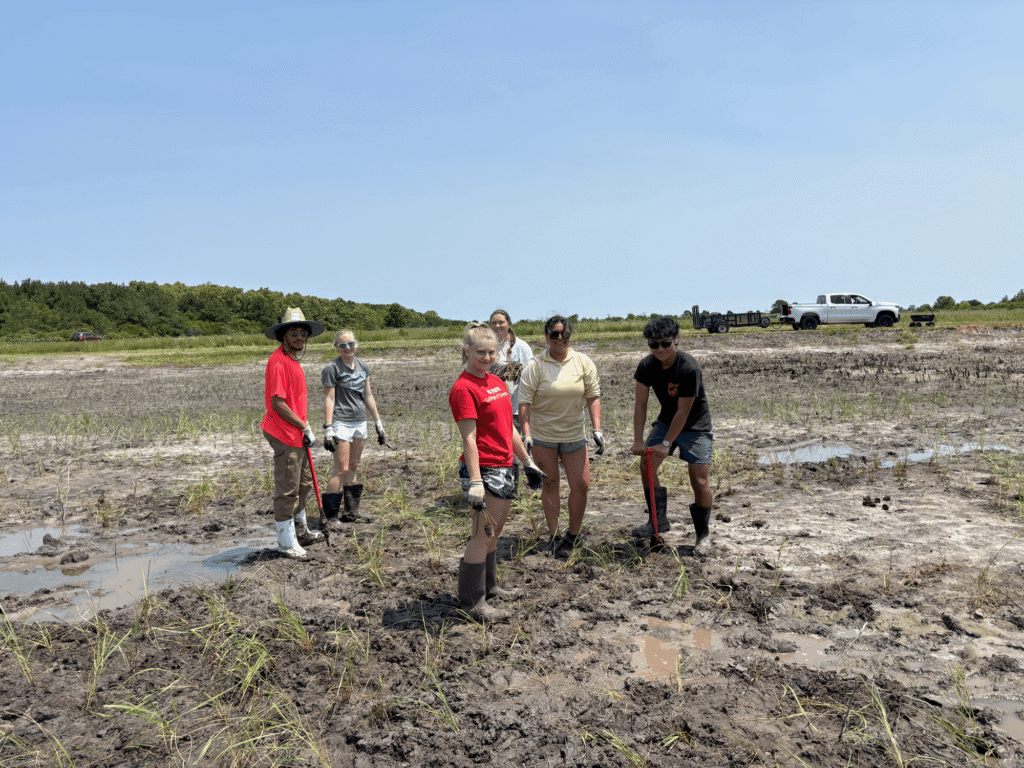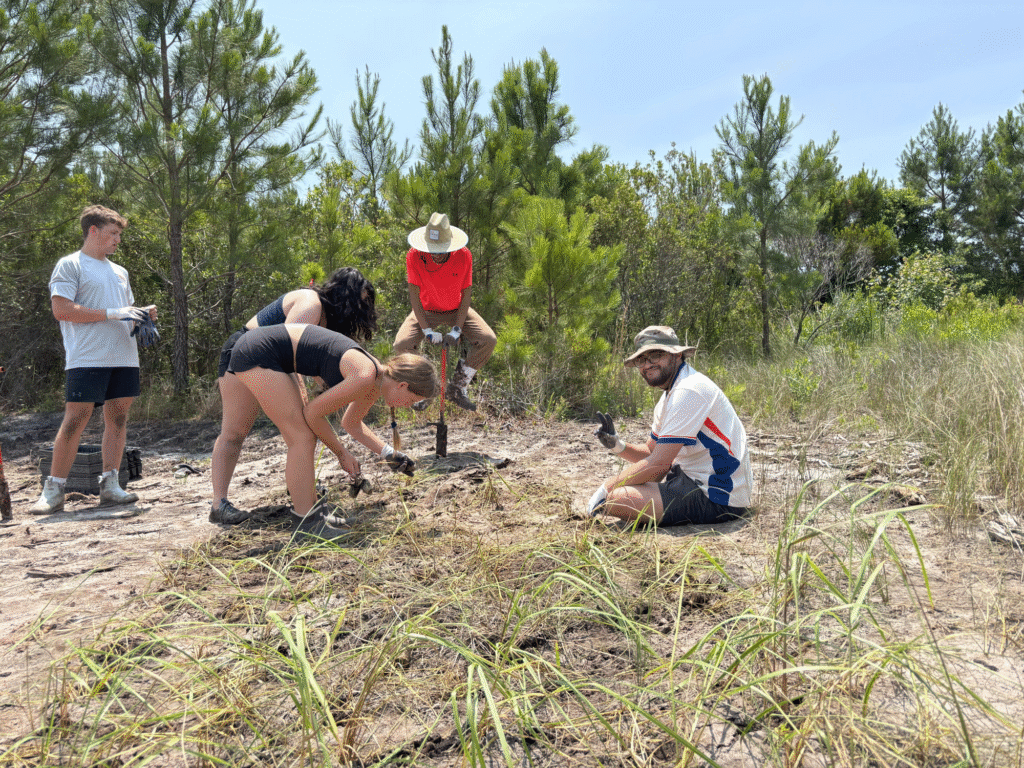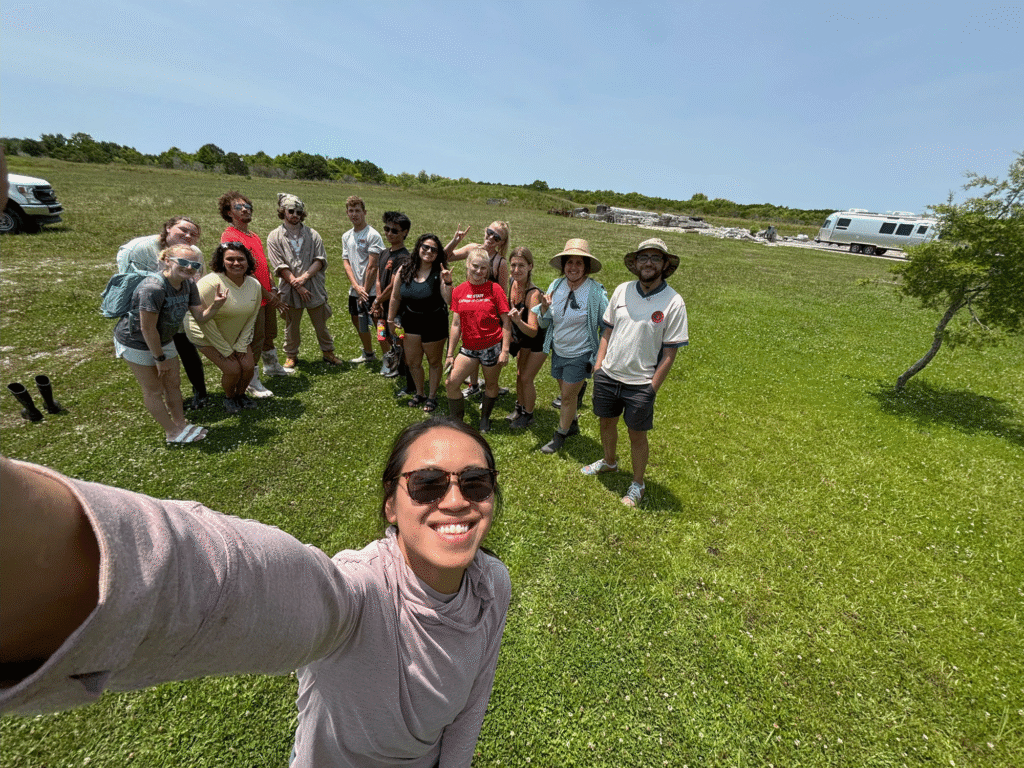NC State Students Are Restoring Crucial Coastal Habitats With First-Of-Its-Kind Plant Nursery
Students in this summer’s marine science field course helped establish a “donor marsh” with thousands of young plants to aid the state’s salt marsh restoration efforts.
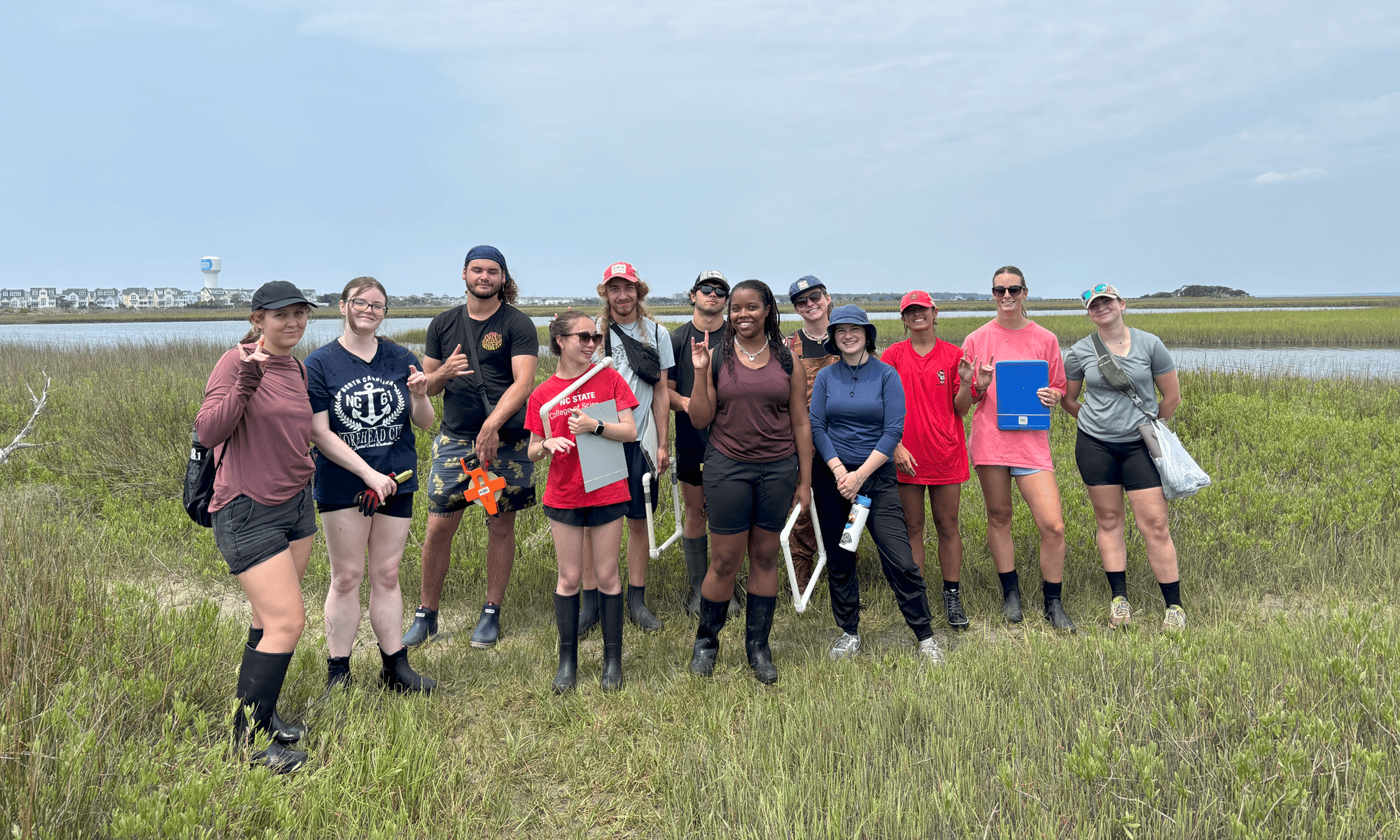
NC State students are helping the North Carolina Coastal Federation protect and restore salt marshes by planting a “donor marsh” in Carteret County.
As part of this summer’s marine science field course, a group of undergraduates spent one day in early June wading into the swampy grounds of the North River Wetlands Preserve, where the Coastal Federation is restoring 6,800 acres of wetlands. Dr. Y. Stacy Zhang, a marine community ecologist and professor in the Department of Marine, Earth and Atmospheric Sciences, led the team of students.
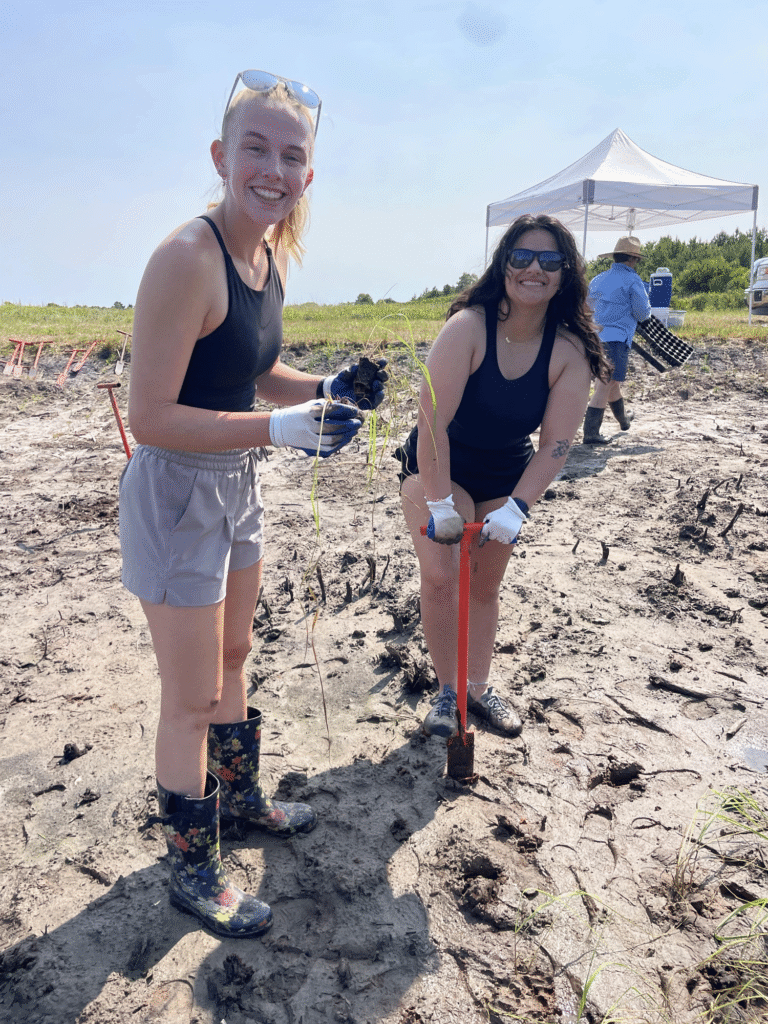
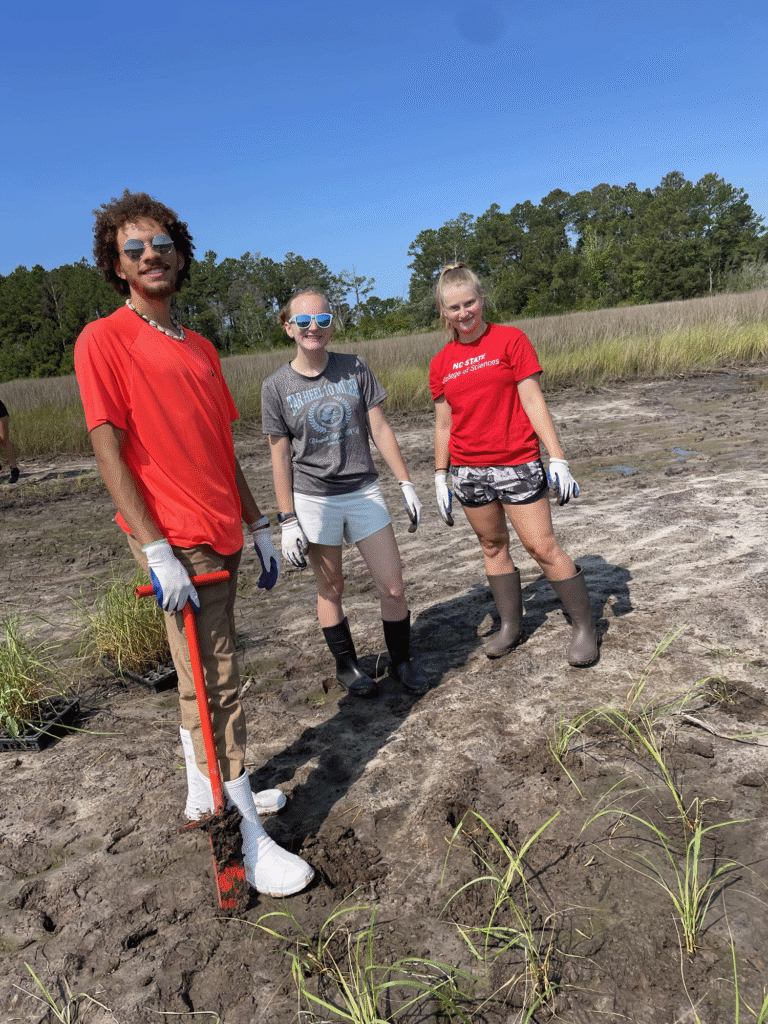
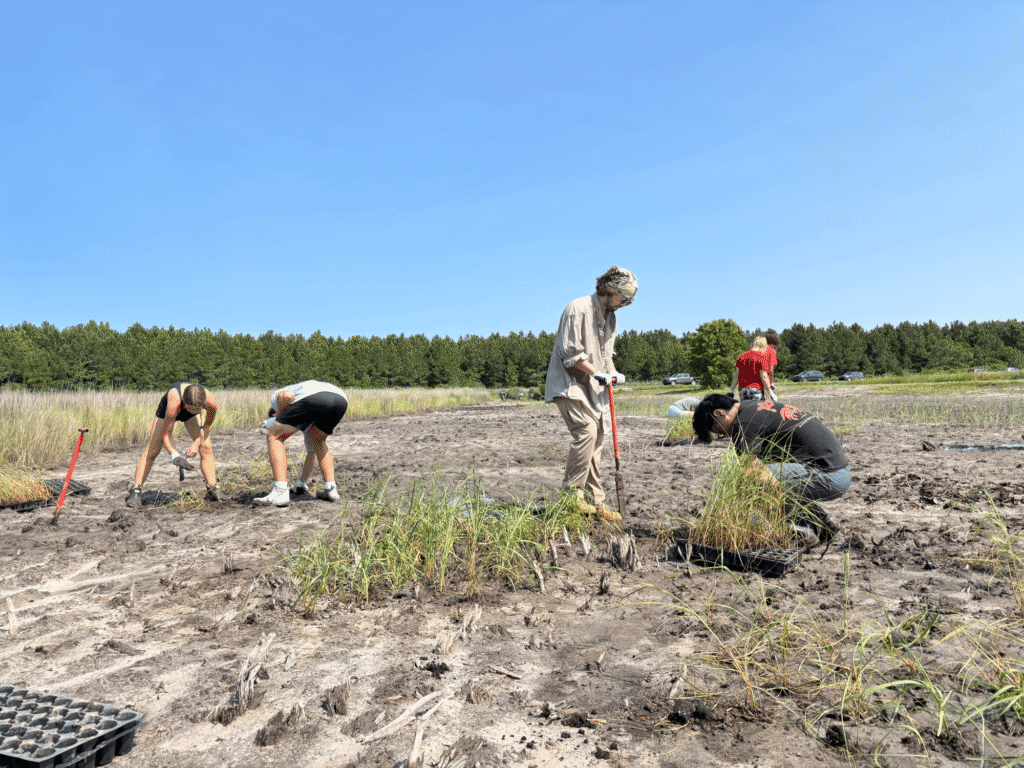
Out in the field, the students gave a quick wiggle to a dibble bar before placing a small plug of smooth cordgrass into the ground, repeating the process every six inches or so.
About five hours and plenty of snack breaks later, the team of students and volunteers had planted approximately 4,500 young marsh grasses, helping create a 1-acre “donor marsh” that will supply plants for future coastal restoration projects.
“The idea of this donor marsh is that the Coastal Federation can harvest from it in the future, so they don’t have to continue leaning entirely on nurseries and buying pretty expensive plugs,” Zhang said.
When purchased from a traditional nursery, young plants that are used to restore marshes can cost around $2 per plug, according to Zhang. That can add up, considering the thousands of plugs needed to restore just one acre of marsh. As an additional complication, those pricey plugs lack exposure to physical stressors while at the nursery, such as light and high salinity. Planting them in their natural environment can then shock the plants’ systems.
“It’s kind of similar to when you buy any plant from a nursery,” Zhang said. “It looks beautiful in the nursery. You take it home, you put it into your own garden, and it doesn’t do so well.”
By planting the plugs in their natural environment, the donor marsh will be its own fully fledged habitat, which the Coastal Federation can sustainably harvest from for future restoration projects while cutting down on costs. According to the Coastal Federation, that makes this donor marsh a first-of-its-kind nursery in the state.
The establishment of a donor marsh is part of the Coastal Federation’s larger Salt Marsh Action Plan, created to address threats to these vital habitats and protect North Carolina’s roughly 220,000 acres of salt marshes.
“Salt marshes are super important for our coastal landscapes,” Zhang said. “They’re really important for shoreline stabilization. They’re really great at trapping sediment so that your shoreline doesn’t erode away.”
Grasses in a salt marsh, like the ones Zhang and her students planted, prevent erosion by holding sediment in place with their root systems. Above ground, grasses further prevent erosion by slowing down wave energy as it comes to shore.
Those benefits, however, are just some on a long list of invaluable services that salt marshes provide, Zhang said. The wetlands also serve as crucial habitats for fish and crustaceans, help filter and store water, and play a role in nitrogen cycling and removal. Overall, services like these place the value of North Carolina’s salt marshes at more than $17 billion per year, according to the Coastal Federation.
But, these habitats need help. According to the South Atlantic Salt Marsh Initiative (SASMI)—a coalition of more than 300 military and government officials, community leaders, conservationists, scientists and fishermen—these habitats are disappearing due to threats like land development, erosion and sea level rise.
One study, backed by the National Science Foundation, found that more than 90% of the world’s salt marshes are likely to be underwater by the end of the century, with the SASMI regional plan stating that 14% to 34% of existing salt marshes along the South Atlantic “could be lost by 2060 due to sea level rise alone.”
With the North Carolina coast projected to experience a roughly 1.5-foot rise in sea level by 2050, the Coastal Federation is taking steps to maintain the ecological, economic and cultural functions of the state’s salt marshes and minimize their loss.
When it comes to the donor marsh, Zhang estimated that it will take about three years for the newly planted grasses to mature and expand, but when they do, she said, the result will be beautiful.
“A freshly planted marsh doesn’t look super impressive on day one, but it’s going to grow and continue to build and get better and better over time, like a fine wine or a great cheese,” Zhang said.
- Categories:
